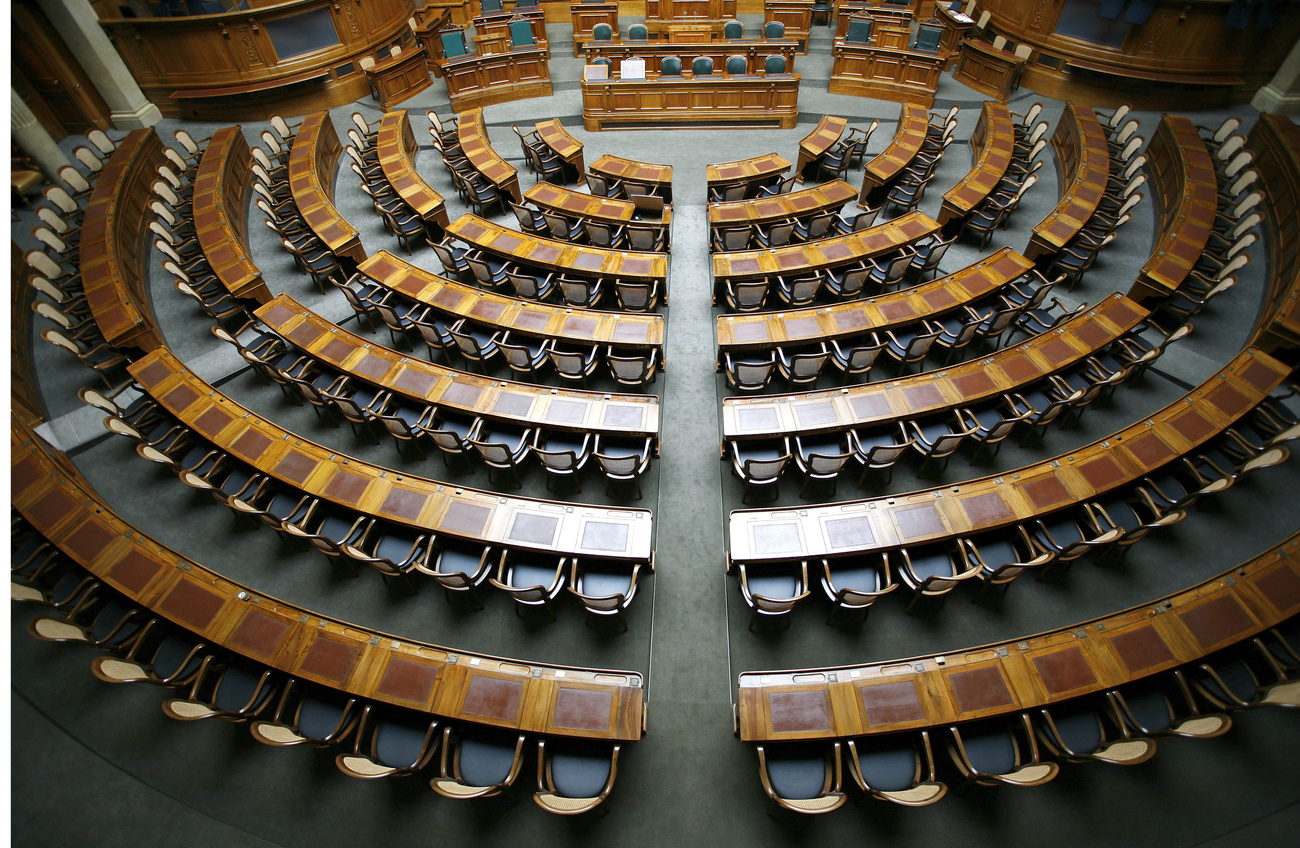
2023 Swiss federal elections – how to complete ballot papers correctly

On October 22, Swiss citizens will elect a new parliament. To do so, they can simply slip a pre-printed, unmodified list into the ballot box. But they can also personalise their choice by striking out, adding or picking-and-mixing candidates’ names. Here is a quick overview of how the process works.
There is no cause for stress. Filling out a list to elect the members of the Swiss parliament is not rocket science. Nevertheless, there are a few intricacies that should not be forgotten, especially as federal elections only take place every four years, which leaves plenty of time to forget how to do it.
Pre-printed lists
To be able to vote in the elections to the House of Representatives – whose 200 members represent the Swiss people – voters receive a set of pre-printed lists at home, as well as a blank list. The number of lists varies from canton to canton; there is one list per political party running for the house in each given canton.
Each list has a heading with the name of the party putting forward the list. To avoid confusion, each list also has a number. Beneath this are rows of lines corresponding to the number of seats the canton has in the House of Representatives, based on its population. Thus, the list will have 36 lines for voters in the canton of Zurich, 19 in Vaud, four in Neuchâtel and two in Jura.
On each pre-printed list, the name of each candidate is written on one line. There are often as many names as lines, although this is not always the case. A very small party may not have enough candidates to fill all 36 lines on a Zurich ballot paper, for instance. Some lines are therefore left blank.
If the voter slips a pre-printed ballot paper into the ballot box without modifying it, the party whose name appears at the top of the list gets all the votes on the ballot paper – that is, one per line – and each candidate whose name appears on a line receives an individual vote.
When the ballots are counted, the number of votes allocated to the party determines how many seats that party gets. These seats are then distributed to the candidates who obtained the most votes.
Personalising the choice
Submitting a pre-printed, unmodified list is the simplest way of taking part in the election. However, the electoral system allows voters to personalise their choice to some extent.
A voter who does not like a particular person on a list can strike outExternal link their name. The candidate whose name has been deleted does not receive a vote, but the line thus rendered blank is still assigned to the party whose name features at the top of the list.
If, on the other hand, a voter particularly likes a person on the list, they can favour that candidate by giving them a maximum of two votes. This is known as cumulative votingExternal link. To do this, all the voter has to do is write the candidate’s name a second time by hand on a line of the list that was originally blank or on a line made blank by striking out another name.
Voters can also add to a list the names of candidates appearing on another list. This process of picking-and-mixing is known as splittingExternal link the vote. The name must be written by hand on a line on the list that was originally blank or on a line made blank by deleting another name.
Lastly, voters can fill in a blank list themselves. The minimum condition is that they write at least one name on this list. They must also pay attention to the list header. If they write in the name of a party and its number, the lines left blank will be credited to that party. But if no party name appears in the header, any lines left blank will not be assigned and will therefore be lost.
Invalid ballot papers
Voters must respect a few requirements, failing which their ballot paper may be declared null and void. Firstly, the official voting material must be used. Any changes must be made by hand. Insults or any markings that could help to identify the voter are also grounds for a ballot paper to be considered invalid.
Voters must also be sure to use the correct postage when returning election materials. In French-speaking Switzerland, only the cantons of Geneva and Fribourg offer free postage. Elsewhere, failure to affix a stamp can lead to nullification of the vote, for example in Valais.
And the Senate?
On October 22, the people will also elect the members of the Senate, which represents the country’s 26 cantons and has 46 members.
Elections to the Senate are a federal matter, so the rules are the same across the country.
Elections to the House of Representatives, meanwhile, are governed by cantonal law, so there may be slight differences between the cantons.
Overall, the procedure for electing Senate members is quite similar to that used for the House of Representatives.

More
The Swiss parliament for beginners
Translated from French by Julia Bassam/ds

In compliance with the JTI standards
More: SWI swissinfo.ch certified by the Journalism Trust Initiative



























You can find an overview of ongoing debates with our journalists here . Please join us!
If you want to start a conversation about a topic raised in this article or want to report factual errors, email us at english@swissinfo.ch.